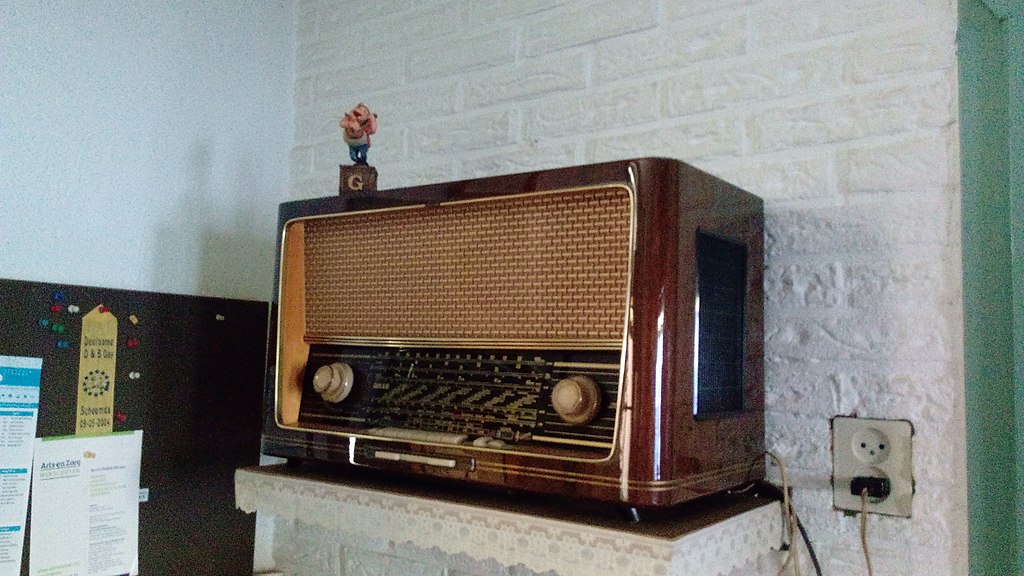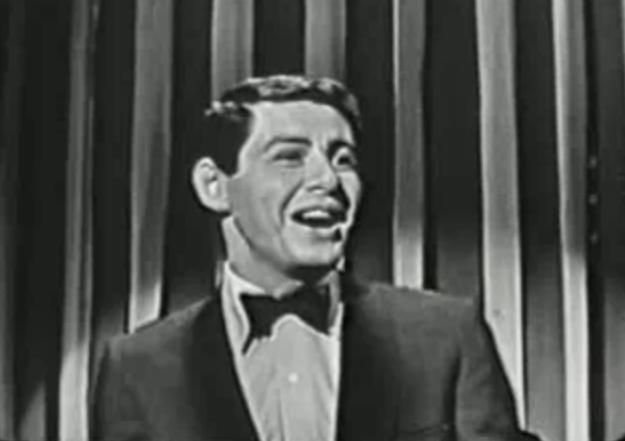In today’s article, we shall dig deep into the history of TV Advertising, as we look to uncover some of the events that unfolded prior to the modern adoption of TV as an advertising medium.
It All Started With Radio

Old radio, Winschoten. Image Credit: Donald Trung Quoc Don (Chữ Hán: 徵國單)
Broadcasting began as a way for businesses to market themselves via radio messages. However, as commercial entities learned that many homes spent a large amount of time each day listening to their radios, they began to investigate this medium as a means of communicating with the general public.
The radio program broadcast by station WEAF in New York City on August 28, 1922, is considered the single event that started the age of radio transmission. This was a ten-minute commercial selling apartment accommodation in the suburbs.
Several large New York department stores had joined the fray by Christmas that year and were running advertisements for their stores.
Radio advertising had improved dramatically by the late 1920s. Advertising companies had now taken control of the schedules by purchasing available air time and selling it to their clients.
They were also in charge of the creative components of the ads and programs, and they even devised entire series aimed at selling one or more products. These initiatives laid the foundation for the birth of television advertising, which would come a few decades later.
The Single Sponsor Era
Because the United States took so long to recover from the Great Depression and World War II, full-time telecasting didn’t fully take off until 1948. At the time, the number of television sets had achieved the critical mass required to be declared a mass-media medium.
Also because television was a brand-new phenomenon, featuring both sound and moving pictures, the advertising business approached it with caution, unsure of the best ways to market their clients’ products on television.
Subscribe for updates
To put it another way, should it be handled like radio advertising with visuals thrown in, or should a completely new method be used to reach television consumers in a meaningful and effective way?
Following a series of research and several surveys, advertising agencies determined that developing shows that emphasized a single product or a line of items from a single company was the most successful approach to reach people with a compelling message.

Still/screenshot from the popular NBC-TV series “Coke Time with Eddie Fisher” in 1954
The usual television shows of the 1950s arose from this model, including Kraft Television Theater, Colgate Comedy Hour, and Coke Time. These television programs, like radio, were created by advertising agencies for their clients rather than studios, as is today the case.
For a while, this method worked wonders for the clientele. However, as television grew in popularity and more people watched it, television networks raised their costs of doing business (i.e. more eyeballs = more dollars spent to reach them all), and this upward pressure on the cost of delivering a production over television (plus the ever-increasing costs of creating new content) forced a massive change in the relationship of all parties: advertising agencies, clients/sponsors, and the networks themselves.
If this very efficient advertising medium had to remain cost-effective for the sponsors, a solution had to be found.
The Era of Magazine Concept Advertising
Sylvester L. “Pat” Weaver, an NBC executive at that time, devised a method that would work and be beneficial to the networks. He pioneered television advertising’s “magazine concept.” Sponsors would buy blocks of time (usually one to two minutes) in a program rather than sponsoring the full show in this arrangement.
This concept would allow for a variety of sponsors – up to four in total – for an event. The networks would now have authority over the content, similar to a magazine because no single advertiser would “own” a specific show.
Madison Avenue, like all new ideas, initially resisted this one, but after some trial and error, they discovered that this method would work very well for a variety of packaged-goods companies producing a cornucopia of brand names, such as Procter and Gamble, which manufactures such disparate products as Tide (laundry detergent), Crest (toothpaste), and Jif (jam) (peanut butter).
The magazine concept had dominated television advertising by 1960, and it has continued to do so ever since. Sponsors now disperse their messages around the schedule to reach as many consumers as possible, rather than relying on audience identification with a specific show. The sponsors’ ability to spread their advertising funds around to reach a larger portion of the public proved to be quite beneficial.
They could now choose the hours and networks where they wanted their message to be seen, rather than being bound into a single time slot every day or week on a specific network.
The birth of most current television advertising may be traced back to the emergence of magazine idea advertising. The infomercial is the one exception, as it is a throwback to the sponsored show concept that was popular in the early days of television advertising.






